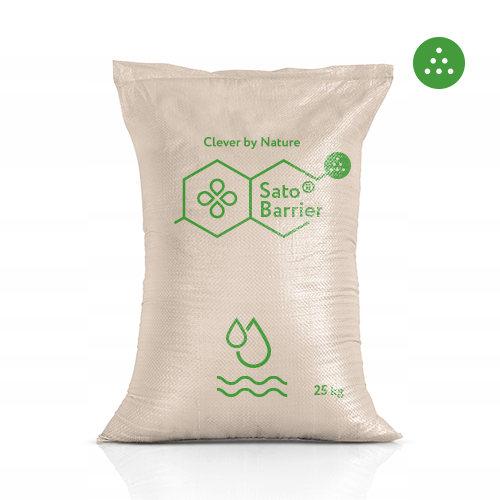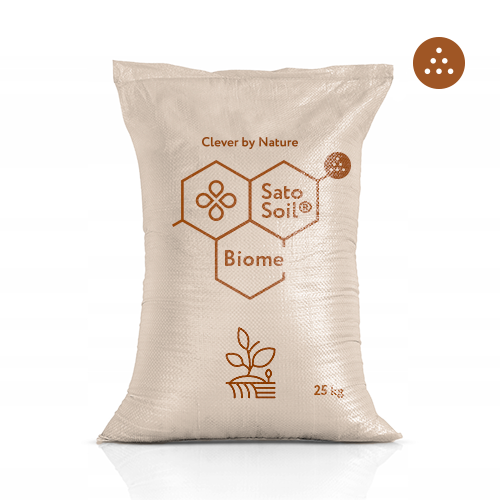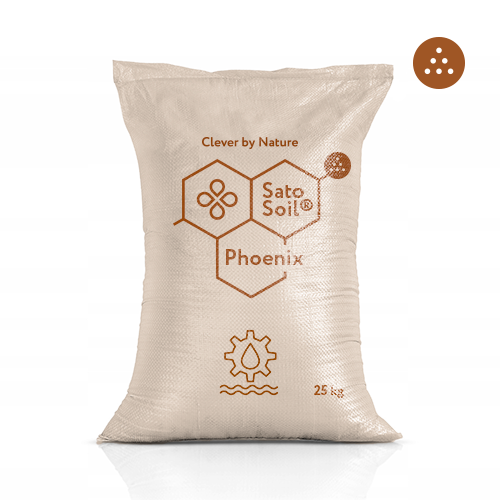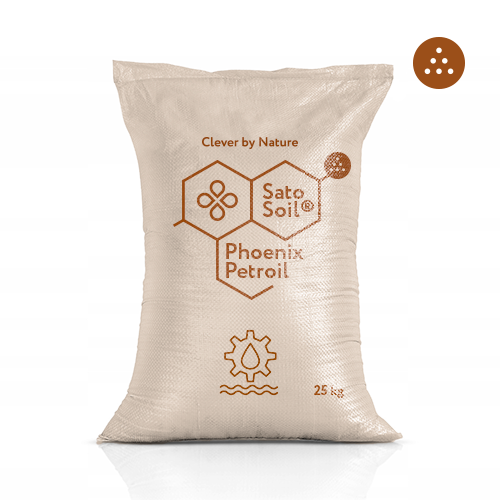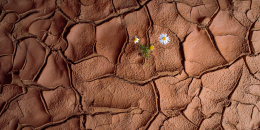City landfills, abandoned wastelands after industrial construction, quarry dumps, sludge storages and tanks, unprocessed waste from any industrial production, spills of fuels, lubricants and oil products, warehouses of expired or prohibited pesticides and venoms – all these are objects of accumulated damage.
Revegetation
Do not forget about the “side” waste of the industrial agriculture itself: these are burial grounds, and bird droppings, and cake storages at oil mills, emissions from technological processes at processing enterprises, beet pulp and filtration sludge from sugar industries.
If reclamation is required at the site of fresh technogenic pollution, then it’s enough to apply measures proportional to the damage: irrigation, soil tedding, sanitation of the pathogenic environment, sowing legumes forage crops, etc. The more neglected the object, the harder it is to rely on self-purification of the environment. Disinfection of such lands becomes more complicated as land degradation expands.


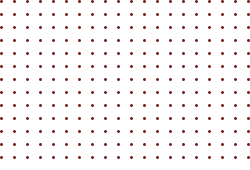
Rehabilitation itself consists in stimulating the ecosystem’s own resources to restore the original or optimal functions of microbiota self-regulation.
Our SatoSoil® peat-sapropel mixtures have been tested on several objects of accumulated damage both in pure form, that is, without additives, and with complementary reagents and binders, when stabilization and reduction of pollutant activity is required, namely with the help of bitumen, phosphogypsum or zeolite, lime, silicon or phosphorus compounds. The introduced reagents promote either the decomposition of pollutants into less toxic substances or delay their effect and mobility in soils and waters.
The peat-sapropel mixture is rich in humic and fulvic acids and binds radionuclides, heavy metals, excess of mineral fertilizers into insoluble and low mobile complexes, restoring the redox potential of soils.



There is a common belief that peat and sand are effective adsorbents for oil spills, but it’s not. For a fresh spill, a number of intermediate steps should be taken to collect and pump out spilled products, neutralize, dry, weather, photo-oxidize, etc. A rational and professional approach to such tasks is important.
EXAMPLES OF CONTAMINATED OBJECTS | POSSIBLE SOLUTIONS |
|---|---|
Reclamation of building sites. | SatoSoil® pHoenix
Correction of saline and acidic soils.
Wasteland restoration.
Increasing soil fertility.
|
Rehabilitation of solid waste landfills. | SatoSoil® pHoenix + SiO /phosphogypsum/zeolite
Perimeter treatment of the landfill body. |
Seepage of filtrates on soils. | SatoSoil® pHoenix + Binders + SatoHum® Barrier
Binding into insoluble complexes of pollutants.
Prevention of evaporation into the atmosphere.
Thermoregulation of the upper layer.
Prevention of filtration into lens layers. |
Neutralization of gas and dust emissions from technological processes. | SatoSoil® pHoenix + Binders
Binding into insoluble complexes of pollutants.
Splitting of pollutants into less toxic elements. |
Eroded coastline. | SatoHum® Barrier + SatoSoil® + erosion control structures + fascines
Slow down the effects of mild erosion.
Coastline nutrition.
Strengthening of slopes, terracing and leveling of gradients. |
Protective plantations. | SatoSoil® BioGrow®
Targeted soils fertilizing.
Biostimulation of growth. |
Slurry, bird droppings. | SatoSoil® Biome + tree bark/zeolite tuffs +
nitrifying and hydrogen sulfide degrading microorganisms + ultrasonic cavitation Combined composting, neutralization of the bioactive environment.
Bioconversion of organic waste in industrial agriculture.
Mineralization and humification of organic matter.
Strengthening of physical and chemical processes. |
Oil pollution, spills of fuels and lubricants. | SatoSoil® pHoenix Petroil + ultrasonic cavitation
Soil salinity reduction.
Cleavage of toxic compounds into low-toxic groups.
Stabilization of acidified lenses of petroleum products. |
City landfills, abandoned wastelands after industrial construction, quarry dumps, sludge storages and tanks, unprocessed waste from any industrial production, spills of fuels, lubricants and oil products, warehouses of expired or prohibited pesticides and venoms – all these are objects of accumulated damage.
Do not forget about the “side” waste of the industrial agriculture itself: these are burial grounds, and bird droppings, and cake storages at oil mills, emissions from technological processes at processing enterprises, beet pulp and filtration sludge from sugar industries.
If reclamation is required at the site of fresh technogenic pollution, then it’s enough to apply measures proportional to the damage: irrigation, soil tedding, sanitation of the pathogenic environment, sowing legumes forage crops, etc. The more neglected the object, the harder it is to rely on self-purification of the environment. Disinfection of such lands becomes more complicated as land degradation expands.



Rehabilitation itself consists in stimulating the ecosystem’s own resources to restore the original or optimal functions of microbiota self-regulation.
Our SatoSoil® peat-sapropel mixtures have been tested on several objects of accumulated damage both in pure form, that is, without additives, and with complementary reagents and binders, when stabilization and reduction of pollutant activity is required, namely with the help of bitumen, phosphogypsum or zeolite, lime, silicon or phosphorus compounds. The introduced reagents promote either the decomposition of pollutants into less toxic substances or delay their effect and mobility in soils and waters.
The peat-sapropel mixture is rich in humic and fulvic acids and binds radionuclides, heavy metals, excess of mineral fertilizers into insoluble and low mobile complexes, restoring the redox potential of soils.



There is a common belief that peat and sand are effective adsorbents for oil spills, but it’s not. For a fresh spill, a number of intermediate steps should be taken to collect and pump out spilled products, neutralize, dry, weather, photo-oxidize, etc. A rational and professional approach to such tasks is important.
EXAMPLES OF CONTAMINATED OBJECTS | POSSIBLE SOLUTIONS |
|---|---|
Reclamation of building sites. | SatoSoil® pHoenix
Correction of saline and acidic soils.
Wasteland restoration.
Increasing soil fertility.
|
Rehabilitation of solid waste landfills. | SatoSoil® pHoenix + SiO /phosphogypsum/zeolite
Perimeter treatment of the landfill body. |
Seepage of filtrates on soils. | SatoSoil® pHoenix + Binders + SatoHum® Barrier
Binding into insoluble complexes of pollutants.
Prevention of evaporation into the atmosphere.
Thermoregulation of the upper layer.
Prevention of filtration into lens layers. |
Neutralization of gas and dust emissions from technological processes. | SatoSoil® pHoenix + Binders
Binding into insoluble complexes of pollutants.
Splitting of pollutants into less toxic elements. |
Eroded coastline. | SatoHum® Barrier + SatoSoil® + erosion control structures + fascines
Slow down the effects of mild erosion.
Coastline nutrition.
Strengthening of slopes, terracing and leveling of gradients. |
Protective plantations. | SatoSoil® BioGrow®
Targeted soils fertilizing.
Biostimulation of growth. |
Slurry, bird droppings. | SatoSoil® Biome + tree bark/zeolite tuffs +
nitrifying and hydrogen sulfide degrading microorganisms + ultrasonic cavitation Combined composting, neutralization of the bioactive environment.
Bioconversion of organic waste in industrial agriculture.
Mineralization and humification of organic matter.
Strengthening of physical and chemical processes. |
Oil pollution, spills of fuels and lubricants. | SatoSoil® pHoenix Petroil + ultrasonic cavitation
Soil salinity reduction.
Cleavage of toxic compounds into low-toxic groups.
Stabilization of acidified lenses of petroleum products. |
